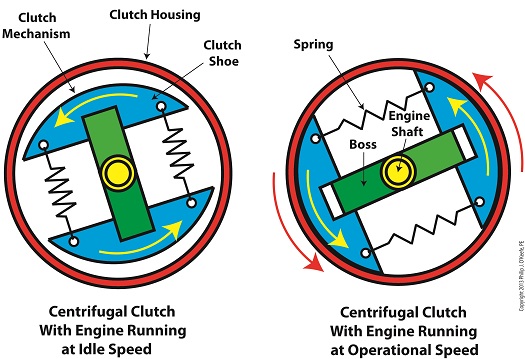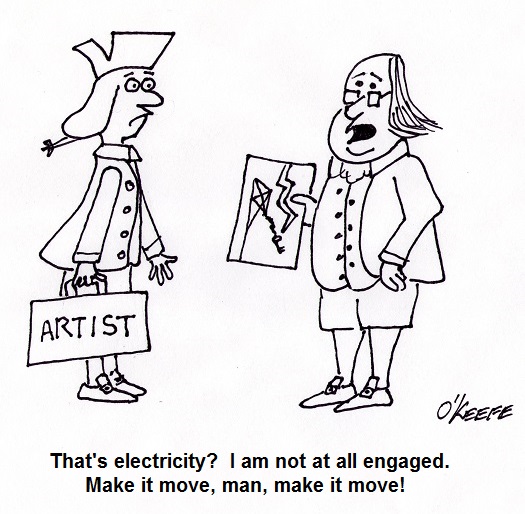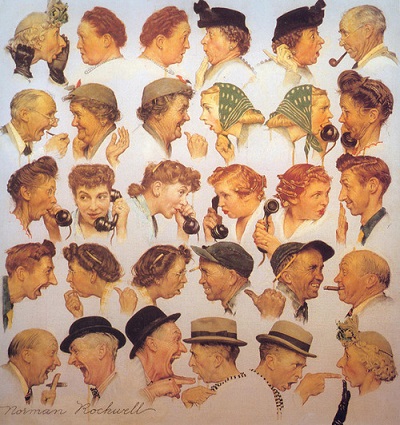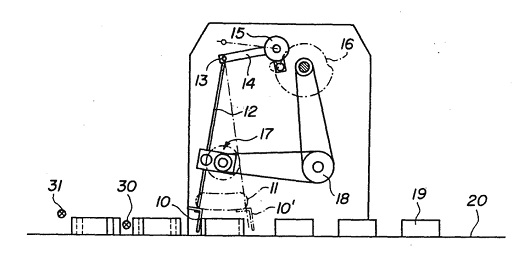|
Ever wondered if a running horse lifts all four of its feet off the ground at the same time? Leland Stanford, an industrialist and horseman of the late 19th Century did, and he hired photographer Eadweard Muybridge to find out. Muybridge’s series of 24 photographs of Stanford’s horse, Sallie Gardner, came to be known as Sallie Gardner at a Gallop and is regarded to be an early example of silent film. The Muybridge photos were viewed at increased speed on a zoopraxiscope, a device he invented in 1879. A precursor to modern movie projectors, it projected a series of independent photographs as a moving image through the use of multiple cameras shooting the subject at different points in time. In this way it was disclosed that yes, indeed, there were moments when all four of a galloping horse’s feet hover in mid air. Today’s moving images are displayed at between 24 and 300 fps, depending on the application. Muybridge’s experiment proved that not only are moving images more engaging than static ones, they are also more explicit, able to convey information still images are not. Take for example this series of stills of a centrifugal clutch assembly. Are you able to tell by looking at these two-dimensional images how a clutch works? How as the engine speeds up the spinning shoes move out and make contact with the clutch housing, this pressure causing the entire assembly to spin? Unless you’re familiar with clutches, probably not. Now here’s the same clutch brought to life through animation:
In today’s fast paced, internet-laden society, people’s attention spans are shorter than ever, and their demands to be visually engaged are high. It’s been proven that holding a modern day viewer’s attention for more than three seconds is a difficult task. This truth is evident in the courtroom as well, where trial attorneys are obliged to increase the production value of evidence presented in order to win over juries, and animation is becoming their tool of choice. What held true more than 100 years ago still holds true today: Nothing tells a story like a moving image. Next time we’ll switch gears, quite literally, to understand how a series of gears work together to power machinery. ________________________________________ Note: If you are viewing this blog article in an email and the animation video does not appear, then click on this link to view the article with your web browser. ________________________________________ |
Posts Tagged ‘courtroom demonstratives’
See How a Centrifugal Clutch Works With Animation
Monday, December 16th, 2013Courtroom Animations – Influencing Jury Perception
Monday, July 1st, 2013| Last week we began our discussion on perception and how without visual cues individuals exposed to the same verbal information will oftentimes arrive at different conclusions as to what they just heard. We also touched on the fact that peoples’ attention spans are extremely limited, so much so that experts studying human behavior conclude that even when the subject matter is extremely interesting to the listener, their ability to absorb information is limited to mere minutes.
No one would argue the fact that we live in the Visual Age. Most images are flashed at us for only a few seconds. Our appetites for visual arousal seem never to be satiated, and venues that lack a visual component are suffering shrinking audiences. Orchestras come to mind. Even pop stars and professional sporting events today employ huge screens to “up” their visual content in the hopes of keeping their audiences engaged. This phenomenon was addressed way back in 1982, when the internet and its cornucopia of images was just a baby. Dr. Donald E. Vinson, a leader in courtroom behavior and trial strategy, wrote in the March, 1982 edition of Trial Magazine, “Attention span and the arousal of attention are fundamental to all perception,” a sentiment which Benjamin Franklin echoed in his statement, “If you would persuade, you must appeal to interest rather than intellect.” Dr. Vinson also states that, “Perceptions are constantly subject to emotional reinforcement, and those which are positively reinforced will tend to be better remembered.” And what’s supplying these necessary emotional reinforcements? Stimulation to the senses. And what type of stimulation is most effective? In Dr. Vinson’s opinion, “A moving stimulus is also more effective than a static one.” So will shortened modern-day attention spans result in speed trials that are equivalent to short movies? Anything is possible, but our legal system as it stands today isn’t able to produce this just yet. So how is an attorney trying to impress their message upon jurors from diverse backgrounds and life experience going to succeed in getting their message across? And what if that message is complicated and requires certain technical aptitudes? Will verbal descriptions be enough? Considering the fact that the average adult American reads at or below the 5th grade reading level, it is unlikely. Research findings discovered more than 30 years ago still hold true today. Messages are most effectively received when employing visual cues, and the most effective visual cue is one that moves. There’s a good reason why my blogs seldom lack a visual component… ___________________________________________ |
Courtroom Animations – Perception: Images vs. Words
Sunday, June 23rd, 2013|
Ever play that game as a kid where you whisper something in the next kid’s ear, and she whispers it to the next kid, and on down the line? When the first and last kids’ renditions of what was whispered are compared, they’re vastly different. Part of the reason for this is that when whispering from ear to ear no visual cues as to the message’s content are present. There’s a reason that the world’s leading language learning systems use visual images to facilitate learning. It’s the same reason that individuals who move to a foreign country can quickly acquire the new language. Visual cues inform the brain in a way that words alone cannot. Words and images are intimately linked within the human brain. If only words are employed, perceptions are bound to be less than exact between individuals. This can present a problem in the courtroom, when the precision of received messages is of the most crucial importance. How can attorneys address this problem to produce a message which has the highest likelihood of being perceived identically by all jurors? By delivering their message through visual images. Studies show that when visual images are provided, perception between individuals is more uniform. Several weeks ago a two dimensional (2D) patent drawing was introduced in our blog series. Granted, it was a visual image, and yet a complete understanding of how the machine actually operated remained a mystery to most. Then we transformed that 2D image into an attention-grabbing 3D animation. By doing so, all gaps in understanding were closed. Sometimes, particularly with complex things, only a moving representation will provide the required clarity. Next week we’ll further examine how limitations in perception affect what goes on in the courtroom. In the meantime I invite you to ponder the impact of this statement, made by the country’s leading authority in the field of jury behavior and trial strategy, Dr. Donald E. Vinson: “Several studies on attention span indicate that even persons who are intensely interested in the topic at hand cannot maintain a high level of attention for more than 20 minutes.” ___________________________________________ |
Courtroom Animations – Bringing Patents to Life
Monday, June 17th, 2013|
Movies, that is 3D animations, are moving into the courtroom, and intended messages are made clearer than ever as a result. If a picture is worth a thousand words, how much more effective is a moving 3D image? We’ve been viewing a static two-dimensional representation of a machine for the past two blogs. Have you been able to figure it out yet? Here it is again:
Would it help you to understand if I identified it as a piece of food manufacturing equipment equipped with a rake that aligns cookies on a conveyor belt? Would that verbal description allow you to “see” in your mind’s eye how it operates? Unless you had the right technical background, it’s unlikely. Last week we introduced the verbiage person of ordinary skill in the art as a term widely used within patent litigation. This person is said to have the ability to interpret and understand patent drawings, and they typically possess a technical and/or scientific background. But what if participants in a legal proceeding lack this background? Technical experts are often hired on as consultants to attorneys, and in some instances, judges, when clarification is required. These experts provide technical expertise and tutorials on the technology involved in complex cases, and it happens with regularity when the operation of a patented device is in question. By employing 3D animations the expert can show how the device operates, rather than attempt to explain it using the technical language of their profession. The expert works closely with an animation artist to create the animation, providing the technical information that the animator will use to create the fully functional model. Animators do not typically have the technical background to accomplish this on their own and will require an ongoing dialog with the technical expert to create the animation. And now the moment we’ve all been waiting for. Here is our static image brought to life through animation:
The animation commands the viewer’s attention and holds their interest, even if they have no background in engineering or science, and the device’s function is now made clear. It must be noted that in the patent drawing, part of the mechanism lies in front of a steel divider plate and part behind, but for purposes of clarity the entire mechanism has been shown to the front of the plate. Now there’s no doubt as to how the parts move together to even up the rows of cookies on the conveyor belt. Next week we’ll talk about juries, perception, and the advantages of using courtroom animations when at trial. |








